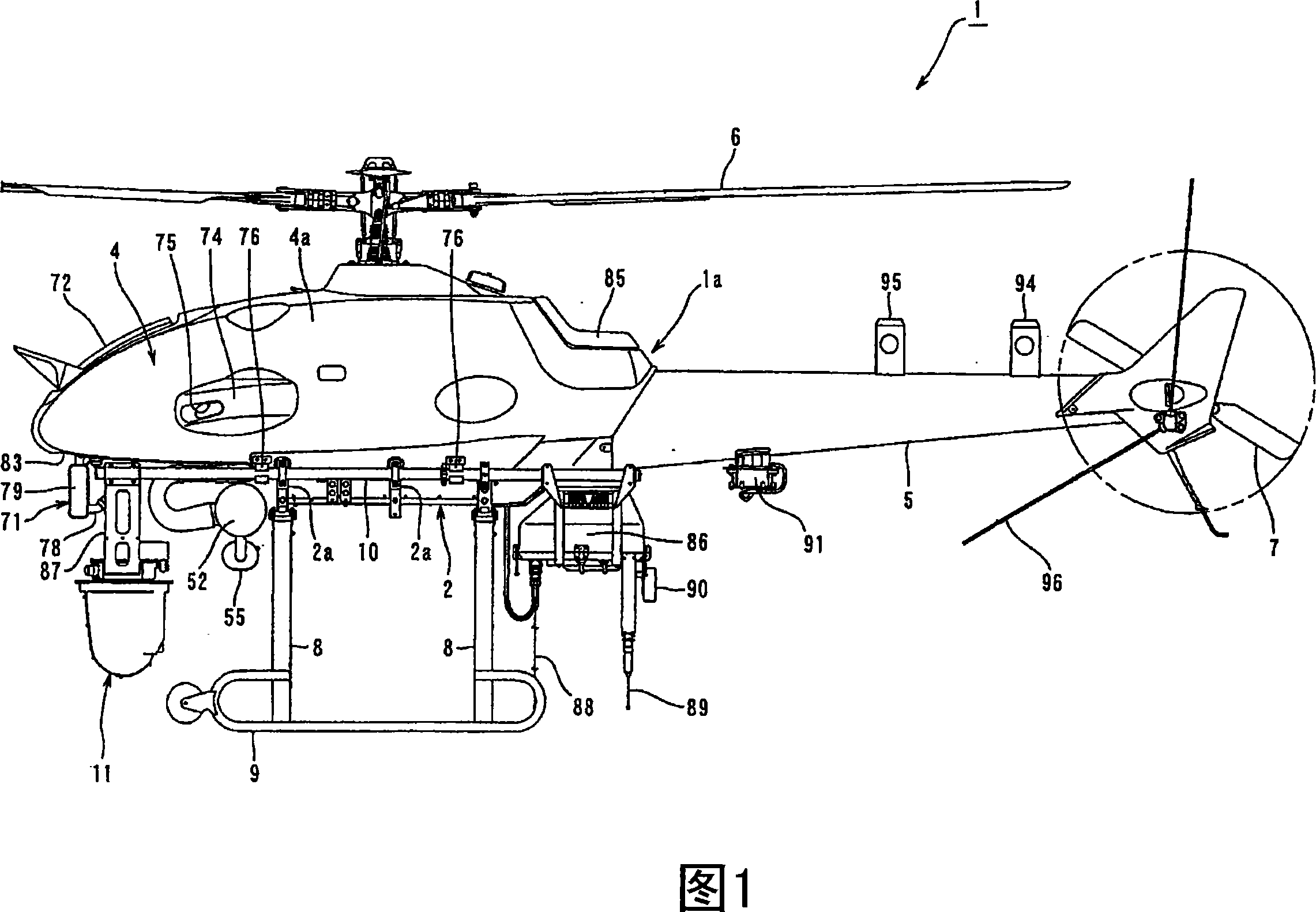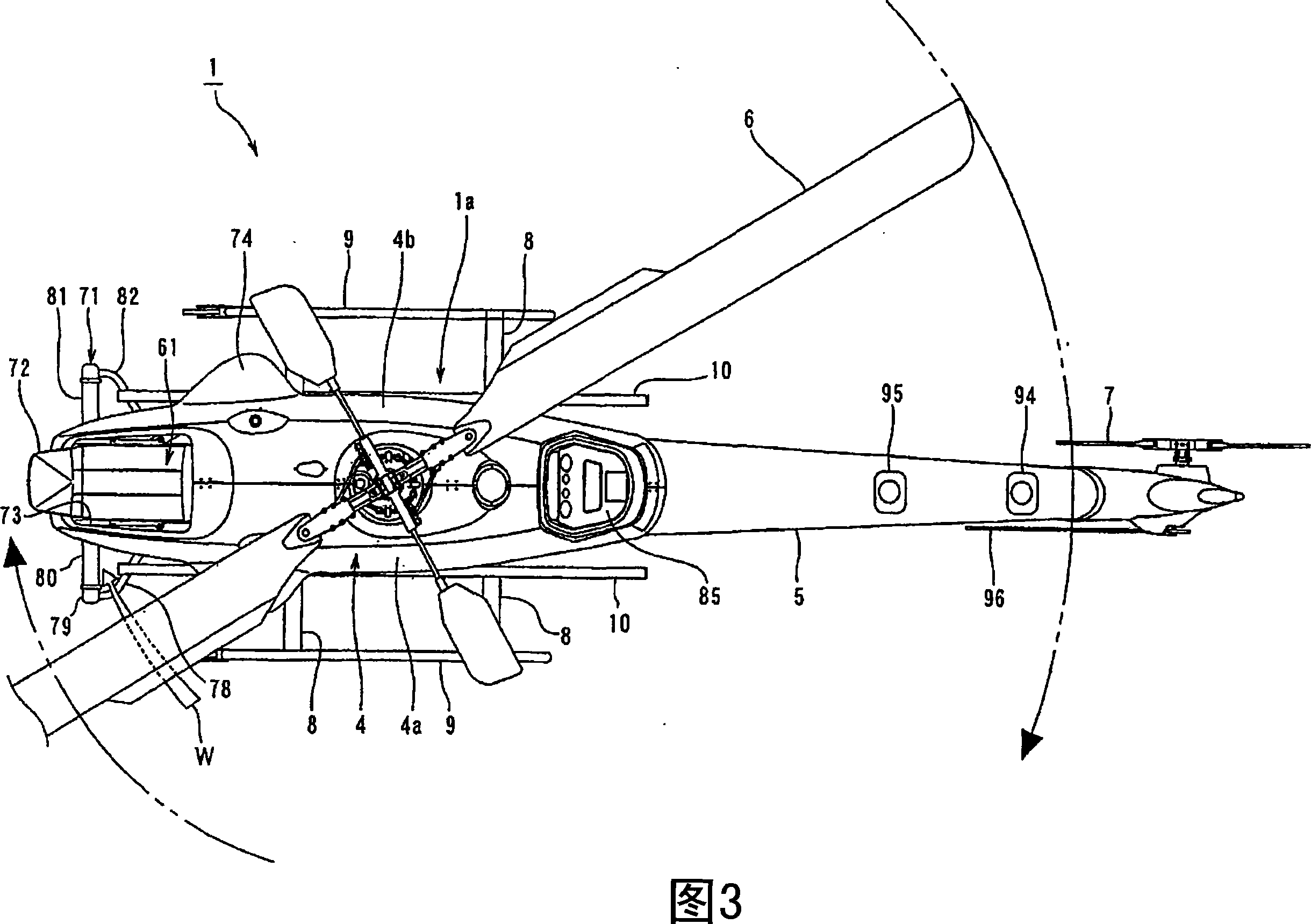Unmanned helicopter
An unmanned helicopter and fuselage technology, which is applied to unmanned aircraft, rotorcraft, motor vehicles, etc., can solve the problem of insufficient cooling of the engine, and achieve the effect of small space, improved cooling performance, and improved cooling performance.
- Summary
- Abstract
- Description
- Claims
- Application Information
AI Technical Summary
Problems solved by technology
Method used
Image
Examples
no. 1 example
[0028] Embodiments of the unmanned helicopter according to the present invention will be described in detail below with reference to FIGS. 1 to 5 .
[0029] The unmanned helicopter 1 according to the present embodiment has a fuselage 1a including a body frame 2 described below (see FIGS. 4 and 5 ), a power unit 3 mounted on the body frame 2, covering the body frame 2 except the bottom The main body 4 (see FIGS. 1 to 3 ) outside the area of the periphery and the tail body 5 connected to the rear end of the body frame 2 . The main rotor 6 is arranged on the upper part of the main body 4 , and the tail rotor 7 is arranged on the rear part of the tail body 5 .
[0030] As shown in FIGS. 4 and 5 , the body frame 2 is formed in the shape of a hollow box extending along the longitudinal direction of the unmanned helicopter 1 . A pair of support legs 8 arranged in the longitudinal direction of the body 1 a are fixed to the lower end of the body 2 . Support legs 8 are formed to ext...
no. 2 example
[0069] The unmanned helicopter according to the present invention can be constructed as shown in FIGS. 6 to 8 . In these drawings, the same or equivalent members as those already described with reference to FIGS. 1 to 5 are given the same reference numerals or symbols, and detailed descriptions thereof are appropriately omitted.
[0070] In the helicopter 1 according to the present embodiment, the second radiator 71 is formed in a vertically elongated shape that is longer in the vertical direction, and is provided at a position below the main body 4 on the left side of the fuselage 1a. The second radiator 71 shown in the second embodiment constitutes the radiator described in claim 3 of the present invention. As shown in FIGS. 7 and 8 , the second radiator 71 according to the present embodiment is mounted to the load bar 10 located on the left side of the fuselage through a bracket 10 a.
[0071] Specifically, as shown in FIG. 6, the second radiator 71 according to the presen...
PUM
 Login to View More
Login to View More Abstract
Description
Claims
Application Information
 Login to View More
Login to View More - R&D
- Intellectual Property
- Life Sciences
- Materials
- Tech Scout
- Unparalleled Data Quality
- Higher Quality Content
- 60% Fewer Hallucinations
Browse by: Latest US Patents, China's latest patents, Technical Efficacy Thesaurus, Application Domain, Technology Topic, Popular Technical Reports.
© 2025 PatSnap. All rights reserved.Legal|Privacy policy|Modern Slavery Act Transparency Statement|Sitemap|About US| Contact US: help@patsnap.com



